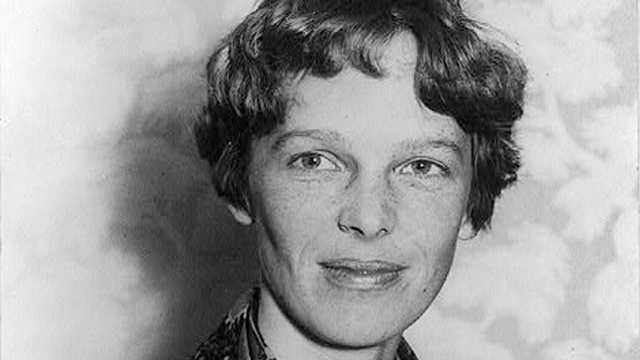On March 14, 1879, one of the most brilliant and influential minds in history was born in Ulm, Germany: Albert Einstein. Over the course of his life, Einstein revolutionized the field of physics and forever changed our understanding of the universe. His theories and ideas about space, time, energy, and matter have left a lasting legacy, making him one of the most celebrated scientists in history.
Einstein’s journey from a curious child to a Nobel laureate and world-renowned physicist is a testament to the power of intellectual curiosity, determination, and creativity. Today, his name is synonymous with genius, and his work continues to shape the world of science, technology, and philosophy.
Early Life and Education
Albert Einstein was born in Ulm, in the Kingdom of Württemberg, part of the German Empire, to Hermann and Pauline Einstein. The family moved to Munich when Albert was a young child, where his father and uncle ran an electrical engineering business. Although Einstein’s family was not particularly wealthy, they encouraged his intellectual interests from an early age.
As a child, Einstein was notably slow to speak, which worried his parents. However, he showed an early interest in mathematics and science. At the age of 12, he had already taught himself geometry, and by his teens, he had begun reading books on advanced mathematical and scientific topics.
Einstein attended the Polytechnic Institute in Zurich (now the ETH Zurich) in Switzerland, where he studied physics and mathematics. During his years at the institute, he struggled in some of his courses but excelled in others, particularly in mathematics and theoretical physics. In 1900, he graduated with a teaching diploma and struggled initially to find a job, eventually landing a position at the Swiss Patent Office in Bern. This job, while seemingly unrelated to his scientific work, provided Einstein with the time and financial stability to pursue his own research.
The Theory of Relativity
In 1905, at the age of 26, Albert Einstein published a series of papers that would transform the world of physics. This year became known as Einstein’s “Annus Mirabilis” (miracle year). Among the papers he published was his special theory of relativity, which proposed a revolutionary idea: the laws of physics are the same for all observers, regardless of their relative motion, and the speed of light in a vacuum is always constant.
The special theory of relativity challenged long-held notions about space, time, and the nature of the universe. It introduced the famous equation, E=mc², which suggested that energy and mass are interchangeable. This equation not only reshaped the understanding of the physical world but also laid the groundwork for the development of nuclear energy and atomic weapons.
In 1915, Einstein expanded his theory into the general theory of relativity, which provided a new understanding of gravity. Unlike Isaac Newton’s theory, which treated gravity as a force acting at a distance, Einstein’s theory described gravity as a curvature of space and time caused by mass and energy. This groundbreaking theory was later confirmed during a solar eclipse in 1919, when British astronomers observed that the light from stars was bent around the sun, exactly as Einstein had predicted.
The general theory of relativity cemented Einstein’s place as one of the most important scientists in history and provided a framework for understanding the large-scale structure of the universe. It has since become one of the two pillars of modern physics, alongside quantum mechanics.
Nobel Prize and Later Contributions
In 1921, Albert Einstein was awarded the Nobel Prize in Physics, but not for his theory of relativity. Instead, he received the prize for his work on the photoelectric effect, which was pivotal in the development of quantum theory. The photoelectric effect demonstrated that light could be thought of as both a wave and a particle, a concept that would later become central to the field of quantum mechanics.
Einstein’s later years were marked by both scientific achievements and political activism. In the 1920s and 1930s, he continued to make contributions to theoretical physics, including his work on the quantum theory of light and his efforts to develop a unified field theory that would explain both gravity and electromagnetism (a goal he did not fully achieve in his lifetime).
Einstein’s work also intersected with politics, particularly during the rise of Nazi Germany. Although he was born in Germany, Einstein, who was Jewish, fled to the United States in 1933 due to the increasing political climate of the Nazi regime. He settled in Princeton, New Jersey, where he took a position at the Institute for Advanced Study.
During World War II, Einstein was involved in advising the U.S. government on atomic energy, and his famous letter to President Franklin D. Roosevelt in 1939 warned of the potential for Nazi Germany to develop atomic weapons. This letter played a key role in the creation of the Manhattan Project, which ultimately led to the development of the atomic bomb. Later, Einstein expressed regret about his indirect involvement in the development of nuclear weapons, becoming a staunch advocate for peace and nuclear disarmament.
Einstein’s Legacy
Albert Einstein’s work laid the foundation for many of the scientific advancements of the 20th century. His contributions to physics, particularly his theories of relativity, changed the way humanity understands the universe. Today, his ideas continue to inform research in areas such as cosmology, black holes, gravitational waves, and the quest for a unified theory of physics.
Einstein’s influence extends far beyond the world of science. He became an iconic figure, known not only for his intellect but also for his advocacy on issues such as pacifism, civil rights, and social justice. He was a vocal critic of authoritarianism and fascism and supported civil rights in the U.S., speaking out against racism and discrimination.
His personal life, marked by his strong intellectual curiosity and sometimes turbulent relationships, also left an impression. Einstein’s image—complete with his wild, unruly hair—became synonymous with genius, and he remains one of the most recognized and celebrated figures in history.
Today’s Impact: The Continuing Relevance of Einstein’s Work
Einstein’s theories continue to shape modern science. His general theory of relativity remains essential in the study of astrophysics and cosmology, particularly in understanding the behavior of massive objects like black holes and the expansion of the universe. The discovery of gravitational waves, confirmed by the LIGO experiment in 2015, provided further validation of Einstein’s ideas.
Quantum mechanics, while initially developed separately from Einstein’s work, has evolved into one of the most important areas of research in physics. Though Einstein was famously skeptical of some aspects of quantum theory, especially its probabilistic nature, his early contributions paved the way for breakthroughs in technology, including lasers, semiconductors, and quantum computers.
Conclusion
Albert Einstein’s birth on March 14, 1879, marked the beginning of a life that would leave an indelible mark on science, philosophy, and global culture. Through his groundbreaking work in physics, Einstein revolutionized our understanding of the universe, and his legacy continues to influence and inspire generations of scientists, thinkers, and innovators. His theories about relativity, energy, and matter laid the groundwork for much of modern physics, and his vision of a unified and peaceful world continues to inspire efforts to solve some of humanity’s greatest challenges.







What do you think?
Show comments / Leave a comment